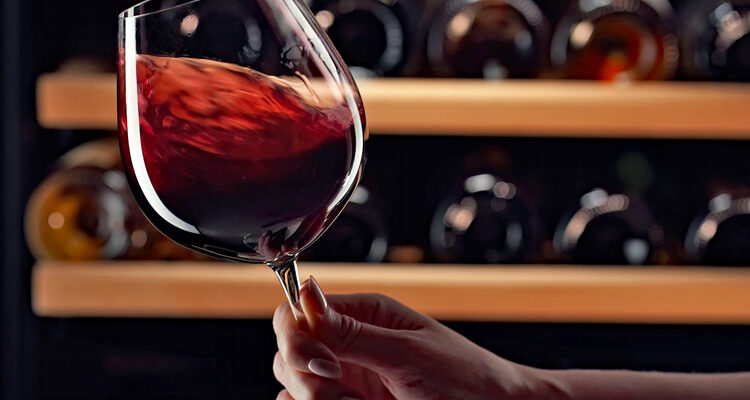To anyone who appreciates the finer points of taking corners at speed on a racetrack, the word ‘Corkscrew’ means only one thing; turns 7, 8 and 8a at WeatherTech Raceway Laguna Seca. It’s iconic. Get it right and you will be smiling for a least the next 1:25.44 seconds as your work your way back for another go around should you happen to be driving a Czinger 21C Hypercar, the current record holder.
Of course, there is an equally compelling use of the word corkscrew that evokes a sense of surprise and delight as you anticipate the simple joy found in a fine glass of wine or spirits. While it may be a different pleasure than deftly making it through the famous set of turns located just east of Monterey, California, the pleasure is no less intoxicating. In fact, it is certain to last longer than a perfect lap of the racetrack. Scott Patrick Cowan takes us inside the world of wine and spirits with insider knowledge only an expert can share.
“What’s happening out there?”
The Oxford Dictionary describes spring as being: The season between winter and summer (now generally regarded as lasting from March to May in the northern hemisphere and from September to November…
A squall of snow is moving past at a full horizontal movement and has been doing so for several hours now, traversing at literally 100 kilometres an hour, maybe a little more. I hadn’t noticed because the taps are running since the pipes just unfroze and there is a wire from a telephone line thrashing against the top of the house, as if to say, “I want to die, but you must listen to me do it.” Outside, I’m fairly certain there are the lemures of dead locals hemming and hawing at a merchant’s bloodline in Little Harbour — the wind is comedically ghoulish through the windows. Honestly, the helm of a grounded dory might be sawing through the house.
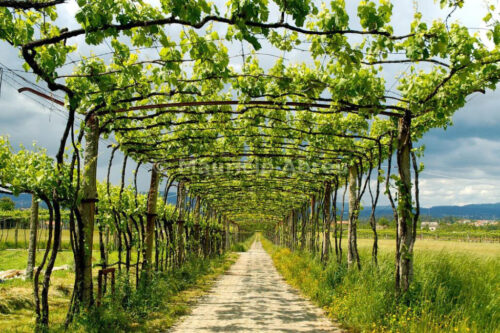
In hindsight, giving a Newfoundlander a writing project for spring may have been the ruin of this editorial. Right now, the ecological reserve of Pelee Island is rife with singing Chestnut-sided Warblers and dwarf hackberry is budding, while in some parts of the country (here, for me, in Fogo) pack ice is lurching against miles of shoreline. Creating a sonorous crunch while it churns and swishes… literally spitting salt at you and your vehicle and house. I am not bitter. But this article may explore what spring means only to the imagination of a beverage professional and heavy dreamer.
Picture this:
I am rifling under my house for a bottle of wine that survived my phantasmagoria winter drinking wassail. With any luck, I will find a bottle of wine from the region of Vinho Verde, in Minhos, Portugal. They call it “the anti-port” and these wines are bubbling with lithe rind and tree fruit sourness. The vines are traditionally wound around massive pergolas, sometimes with ladders on wheels for a winemaker to swing through the vineyard. It is a library of grapes during harvest, and one winemaker or a team of harvesters will rip every single book from the shelf, so to speak.
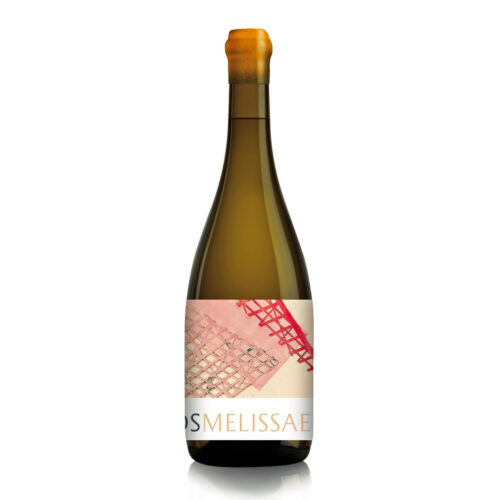
Once sorted, and fermented, the wines are traditionally made to be sent to market in factory-style quantities. However, in a tiny corner of this region, there is a winery called Aphros who are teasing erstwhile ghosts of winemakers. The grapes will be sent into a room to ferment where there is no electricity. Many of them will become wine in ancient amphoras, which is a hand-made clay vessel and in this case lined with beeswax. The wine called ‘Melissae’ smells just like the Hyacinth probably growing right now on Pelee Island. It is aristocratic on the palate, well-tailored, kindly, and I think I’m just trying to say it’s a fragrant wine that has been primped and doted on in the vineyard by more than one admirer. One would expect these wines from Vinho Verde to be maybe predictable, but this winery is the opposite. Melissae is the princess who snuck out at night through a blanket ladder to do God knows what with who knows what. Melissae is rare and misunderstood but I feel that it must be how a Newfoundlander perceives spring. It’s hard for a Newfoundlander to explain spring.
Well, that one went down easy. Hopefully I saved something from my Czech importer connect, Brenda, who operates Bines & Vines out of the Atlantic provinces. She told me one day, “The Pálava grape is the most counterfeited in all of Europe.” It grows basically on a molehill spread thin across tiny municipalities and represents 3% of all Czech grape plantings. On the palate, it is the wake-up from dormancy that spring wine commands: a little like a dull pocket-knife tracing the top of your tongue. I remember the fuzziness of still-fermenting Pálava waking me into relative sobriety during a no-need-to-spit wine tasting. We had all gathered on a church pew in the main room at Mallard Cottage with a croft of wine glasses puddling with left-overs and teary streaks of the last wine and so on.
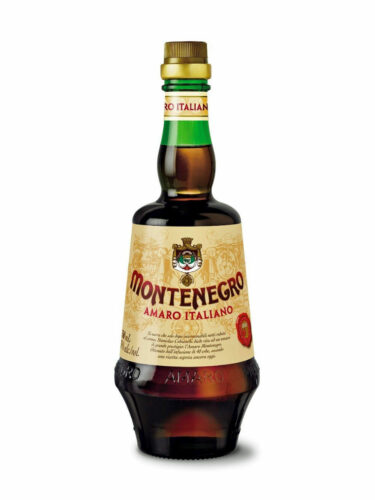
Sometimes, I think, farmers just have good years, and the peaches just taste right. I remember a guest from Georgia once said, “What was that good year we had for the peaches?” The winemakers at Syfany in Morava of the Czech Republic probably have a good year with the peaches every year, so long as they are making this succulent, tooth-tingling Pálava. It stands as a lone peach tree in a grove of falsity. Newfoundland spring is quite a lot like this, on the years for which it does seldom appear.
Anyway…
Early spring during northern hemisphere vineyard day-to-day is usually a time when a trained hand is pruning and ripping apart dormant grapevines, sometimes with their bare hands. Inside the winery, however, there is usually a roomful of meditating wine barrels, waiting for the moment of wake-up.
In the world of liqueurs, especially amaro, springtime is when harvest often begins. A true producer of these elixirs is busy gathering and drying roots like Angelica, which is said to be named after the angels for the hallucinations it can conjure if one is reckless enough to smoke it. Note: I do not condone this or know anything about it. After vacuum-sealing it in neutral grain spirit, I do know that it made my mouth go numb and I had to ask if perhaps I was mildly allergic. The nuances of this kind of tapestry, once produced by monks who were looking to framework the elixir of life, suggests mastery. It also suggests an understanding of the fauna and flora far beyond the permafrost of latent spring throughout the world. It is not uncommon for an amaro to contain 40 or more botanicals which were all hand-sourced and tested for potency via drying, toasting, roasting, maybe even chanting. There is a lot of myths around these potions. At one point, they were medicine. At another point, they were apparently the only tool of seduction for a man daydreaming of a new life.
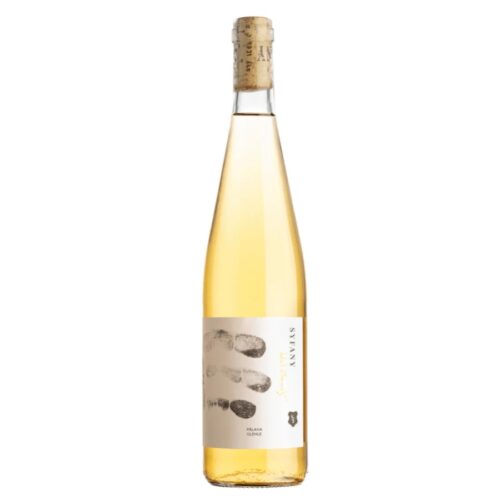
A scoundrel and story-teller I once worked with one day told me the story of Amaro Montenegro, and since he was Italian, I knew there was a chance he knew what was up. He said, there was a man who made it his life quest to make something so charming, that even a princess would fall in love with him. So, every spring he gathered roots, bark, flowers, and every spring he looked back to the pantry at his shelves of dried fruit and peels. For eleven years he obsessed. All he wanted was to make the perfect concoction. (Really, all he wanted was the princess.) On that final year, they say during May, he found a way to bridge the bitter and herbaceous with the warm and tropical. He boiled. He distilled. He macerated. She consumed his thoughts. He found himself transfixed in his work, and suddenly, through a stroke of luck or devilishness, it made itself. His triumph could be heard in the drunken yawps bouncing all across the sun-stained structures of medieval Bologna. Then, he earned an audience with the princess, finally, to announce his intent and his generous donation to history itself. She tasted the wine. A smile crinkled at the corner of her mouth. Then Fabio told me, “They said the king cut his ———— off for doing this. I don’t know.” Spring always reminds me of this man and whatever sacrifices he actually made. Hopefully they didn’t cut off his research grant for the project. I enjoy amaro best with a massive ice cube and an orange peel at the end of a long nosh or by the fire with somebody who enjoys the same bitter to sweet ratio. I know this isn’t about me, but spring in Newfoundland is sort of that way, too. Don’t ya think? Look out always for amaros made by artesian means, because you can guarantee that there will always be madness and devotion behind them, often with somebody’s hands buried in the dirt or studying flowers.
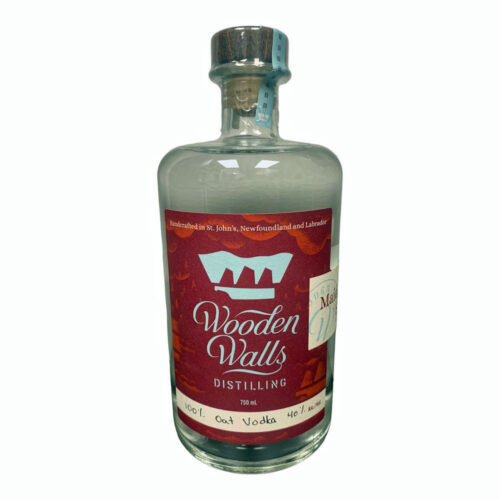
Spring is as much about discovery as it is preservation. Even though it brings me tremendous joy to lock myself onto a stool and watch the pack ice sway, I love to do it with a spirit in my glass. Only in recent years have I been able to find joy in the confusing art of imbibing raw spirits. It helps when you get to talk to the distiller about his or her decisions, or even if from the direction of a more informed friend, you’re told, “Open your mouth and breathe in through your nose. Think about,” so and so. I’ll never forget the spring tasting of four vodkas that my friend poured for me after opening a distillery. Before completing a master blend, they made vodka from 100% oat, barley, wheat, and also rye. All are still available online for now. Each one sat lighter or heavier on my tongue. Each time I felt compelled to gulp quickly, but I was each time surprised by my own patience and personal growth. Of course, this was a business setting, and to do rampant vodka shots at the midday could be accepted with this line of work. Yes, truly. The rye vodka was smooth and fastened my spine up-right, powerful, but more-ish. The oat vodka was giving vanilla, but for no good reason. There was no vanilla hidden in there, and no oak barrel to simulate it. The barley! The wheat! I wish I had kept tasting notes. The rye! All of them gathered from the last season’s dried grains. All of them breathlessly je ne sais quoi. I’ll confess, I’m a doctor, not a distiller, damn it. I’m not really a doctor. But one thing I’ll mention throughout all of this is that spring is most often about a sense of self that is renewed (or destroyed) and the rarity of moments, with which our minds may catch and hopefully process. Whether that be in distilled experience or through repetitive time until we are greeted with an opening bud. Mind you, it is quite possible that I was just smashing vodka on April 3rd at 2PM and enjoying it shamelessly. I still don’t understand spring. But it has stopped snowing outside. And somewhere on a tiny island in Ontario a bird with a silly name is singing in a forest of birds also singing.
Please note that this article has not been paid for by Newfoundland summer tourism marketing companies, big company amaro, the elusive Pálava grape, or spring. Who really knows what that is, anyway?



